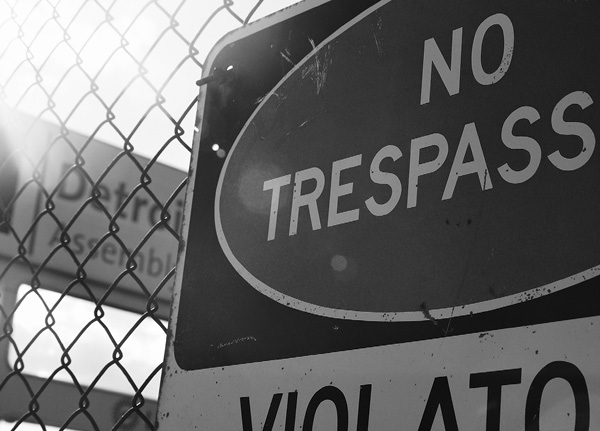
WALKING THE LINE
first performed on May 17, 2015
Hamtramck/Detroit border, Detroit, MI
performed once in 2015
LUDMILA FERRARI
Ann Arbor, MI
466080583l466080583u466080583d466080583f466080583e466080583r466080583r466080583a466080583@466080583u466080583m466080583i466080583c466080583h466080583.466080583e466080583d466080583u
WALKING THE LINE
LUDMILA FERRARI
The Porous Borders festival is situated on the border that separates, and unites, the small city of Hamtramck with Detroit. For our performance, we chose to work on the border segment contained within the GM Assembly Center, built in 1985 over the demolished Dodge Main plant. The actual GM plant not only signals the implementation of a mechanized mode of production; its construction also demanded the annexation of a larger territorial base—a dismantling of 1200 homes in Poland Town and the swamping of the Beth Olem cemetery within its grounds. Our chosen segment was termed as ‘inaccessible’ since this particular limit was legally born inside the factory. Its inaccessibility was predetermined by the massive event of the assembly plant; that is, by the limits imposed by the expansion of post-industrial capitalism.
Therefore, we found ourselves in a complex situation: exploring the porousness of inaccessibility. Thus, if a border is inaccessible—meaning it cannot be accessed, traversed, crossed, trespassed, reinforced, marked, or remembered—what is left of the limit? An inaccessible border is an abstract border, for concrete borders are porous: they face the possibility of permeation. There is no border without the attempt of crossing. How could we cross this border? How could we make it visible? Our performance was very simple: it consisted of tracing the physical border of the GM plant by walking around the perimeter of the factory. The walk was recorded using a gopro camera and a GPS tracking system. The final product was a projection of the video inside a gallery/store in Banglatown, Hamtramck, and a printout describing our reflections on the walk.
So, while my head-camera was recording a view of the plant, I was also being seen and tracked by the guards at the plant. A silent dialog took place here, one that was only possible because there was a border, a fence, and a protocol. Thus, while something was being lost in the process—since the real experience of walking the perimeter was un-transmittable—something else was being produced: an image that was not controlled by our vision (the gopro camera has no screen): a new entity, a body-eye or an unconscious eye that recorded my body as an observation target. A strange porosity appears there, something like, “I see you, and you see me seeing you.”